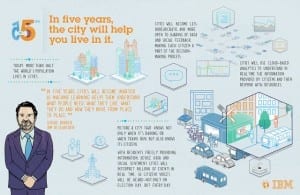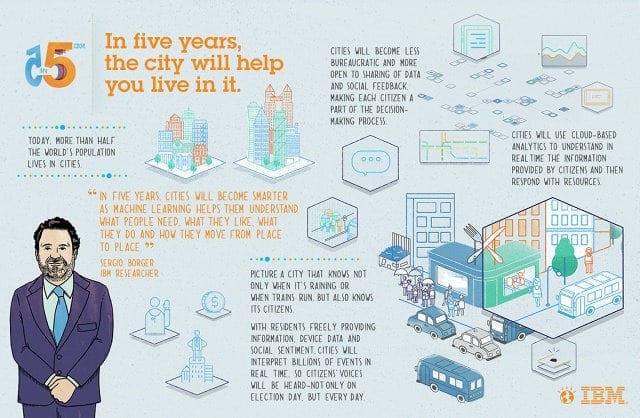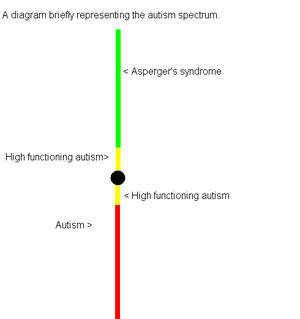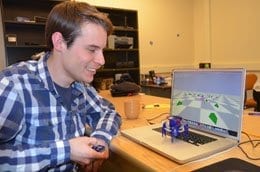
The company’s annual report of five predictions for the next five years is all about the benefits of big data: stores, cities, classrooms, and hospitals.
In the 5 in 5 report IBM’s top scientists report on what the world, supported by smart sensing and computing, will look like in five years. Last week, Fast Company previewed the report with the physicist who heads up the research team: Dr. Bernard Meyerson, IBM Fellow, and Vice President of Innovation.
In five years, cities will be sentient. More buses will automatically run when there are more people to fill them. And doctors will use your DNA to tailor medical advice and smart computing to diagnose and plan treatment for big diseases like cancer not in months, but in minutes.
In five years, physical retail stores will understand your preferences and use augmented reality to bring the web to where shoppers can physically touch it. Sophisticated analytics will allow the classroom (not just the teacher) to track your progress in real time and tailor course work. Digital guardians will protect your accounts and identity, proactively flagging fraudulent use, while maintaining the privacy of your personal information.
In five years, we will have analytical models that allow us to actually change the future and prevent the traffic jam that would have happened if 20 minutes from now if we hadn’t already rerouted lights to stop it.
Here are details about the ways these five predictions will define the future and impact us at a personal level:
THE CITY WILL HELP YOU LIVE IN IT
More than half of the world’s population currently lives in cities–and that is increasing. “By 2030, the towns and cities of the developing world will make up 80% of urban humanity and by 2050, seven out of every 10 people will be a city dweller.”
With the rise in smart phone and sensing technologies, analytics and cloud computing,cities will be able to respond quickly, and even predict problems before they occur. The cities will soon be able adjust automatically. “This will give rise to new cities that can respond in real time, predict problems before they occur, and deliver up more tailored services to make city life better for everyone.”
The total number of smartphones in the world is expected to top 3 billion by 2017. Increasingly, cities will enable new ways to interact with citizens via their mobile phones.Mobile apps will become the tool for identifying broken street lights, tagging and reporting pot holes, and text messages will alert people in real time when a problem is fixed. When social sentiment reveals that new zoning plans are unpopular or that rush-hour traffic is costing the local economy, virtual town halls will incorporate citizen feedback to adjust plans.
This will also enable cities to adapt services and schedules based on feedback. “Think about transportation,” says Meyerson. “In the city, transportation right now is on a fixed schedule as opposed to need. What if you actually had the ability to detect ahead of time the motion of your citizens and adjust your flow of transport capability to match the immediate need? So that maybe a baseball game went two hours long, you realize that meanwhile you may have had 14 trains tied up at local stations waiting for all the folks coming out of the stadium who never show up.”
“Contrast that with looking at everybody’s cell phones and where they are, and anonymizing the data. But taking that anonymous result, you nonetheless know that, ‘Wait a minute, all of a sudden 35,000 people got out of their seats or are heading for the exits.’ You know it’s time to spool up the transport system.”
Cities and their leaders will make decisions based on infinite different types of information that will be visualized on fluid heat maps of city systems. Using advanced analytics, it will be possible to understand and continually digest new information freely provided by citizens. Cities can become more flexible, increasingly flatter, less encumbered by bureaucracy, and more open to sharing data and insight.
The Latest on: What Life Will Be Like In 5 Years
[google_news title=”” keyword=”What Life Will Be Like In 5 Years” num_posts=”10″ blurb_length=”0″ show_thumb=”left”]
via Google News
The Latest on: What Life Will Be Like In 5 Years
- State Recommends 56 Years to Life For Harmony Montgomery’s Convicted Killer Fatheron May 8, 2024 at 3:51 pm
Prosecutors are recommending a sentence of 56 years to life in prison for Adam Montgomery, who was convicted of beating his 5-year-old daughter to death in 2019. Montgomery refused to attend most of ...
- Unraveling life's origin: Five key breakthroughs from the past five yearson May 4, 2024 at 4:40 pm
Recent research has focused on trying to recreate in the lab the chemical reactions that constitute life as we know it, in conditions plausible for early Earth (around 4 billion years ago).
- What Hollywood Will Look Like in 10 Yearson April 27, 2024 at 4:52 am
AI, strikes, and COVID-19 have meant tough times for Tinseltown, so how will it navigate the ongoing changes facing it?
- 'Time traveller' reveals what life is like in year 6000 and has picture of future city to prove iton April 19, 2024 at 4:59 pm
A "time traveller" has revealed what life is like for humanity in the year 6000 - and has a picture of a city to prove it. The man, whose face is blurred, claims to have been part of a secret ...
- Where Will Bitcoin Be in 5 Years?on April 14, 2024 at 11:30 pm
Here's where Bitcoin might be headed in the next five years. Before speculating on where ... creating an ideal environment for alternative assets like cryptocurrencies to thrive.
- Where Will Bitcoin Be in 5 Years?on April 12, 2024 at 8:26 pm
Investors considering the long term should see two halvings over the next five years. The next one will occur sometime in 2028 and reduce mining rewards to 1.5625 Bitcoin. Think of it like this ...
- What will the world really look like in 10 years time?on March 21, 2023 at 1:51 am
“We’ll see circular job journeys, where you might hit seniority in your early 30s then step away to fit your life better ... fast rental vehicles like electric scooters and bikes will be ...
- Planning to Retire in the Next 3-5 Years? What to Consider Todayon July 25, 2022 at 5:00 pm
I often work with my clients three to five years ahead ... during this stage of life. In the years before retirement, determine what your ideal lifestyle should look like. How do you want to ...
via Bing News










